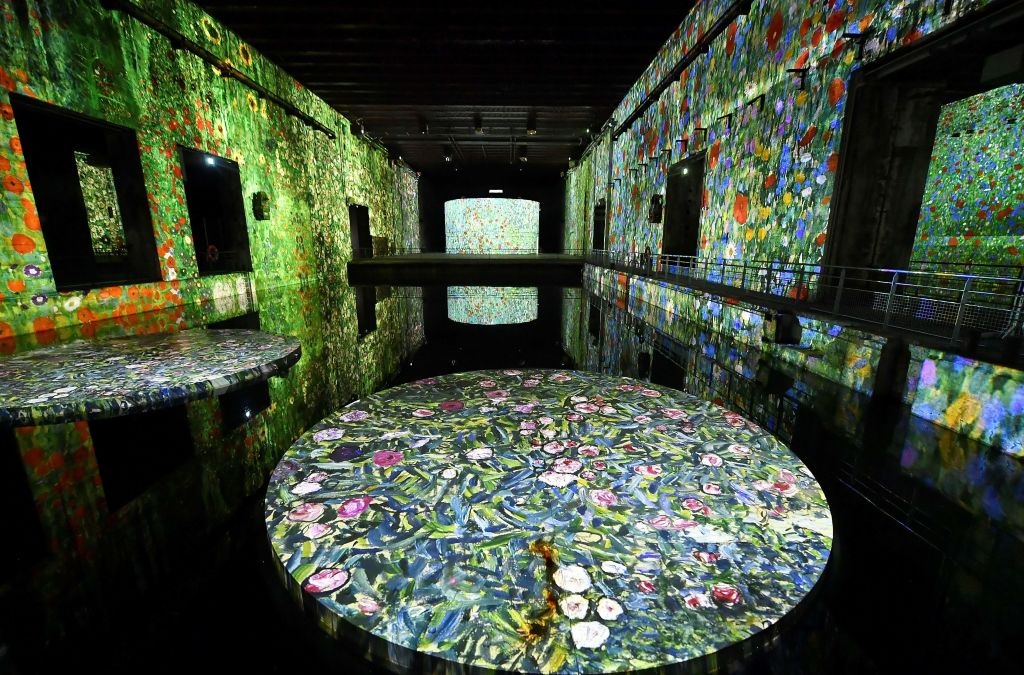For someone accustomed to seeing Data as lines and columns in an Excel spreadsheet, this statement can be quite surprising. But, when Data is used to create Digital Installations, its real beauty becomes apparent and tangible. Digital Installations are pieces of art where the environment evolves with the artistic performance to create a unique, dynamic, and immersive experience. In this setting, the viewer can experience the art moving in synergy with the music, with its movements, or with the movements of another person to create new artistic patterns. The viewer is not any more simply a bystander that is here to appreciate the art of someone else, he is now embedded into the art itself. This completely changes the boundaries of art and the connected experience.
A pioneer of such installations is the TeamLab studio from Tokyo, Japan, who stated that they believe “that Digital Domain can Expand Art”. In their installations, the viewer can navigate through different rooms, each with its own symbolic theme. One room, for instance, has autumn leaves drifting across the place in harmony with the melody present in the room. Another room has digital animals and butterflies freely moving around. The specificity of those animals or butterflies is that they were just drawn by the viewers rendering the experience interactive and unique. It also challenges participants, to find their creation among the other ones.
Another example of such installations is now being held in Bordeaux, France, in a place called Les Bassins des Lumières. This place used to be a submarine plant that was repurposed to host the arts from the committee culturespaces. In this abandoned submarine plant, viewers can see the work of Paul Klee evolving with the music of the enchanted flute. And this is only the first part of the performance. In the second part, viewers can witness the work of Gustave Klimt becoming a living reality around them.
Digital Installations are changing the rules of the art game. Now, viewers are an integrated part of the art system and everything can become a support for artistic creation. And this is only possible thank to the use of millions of data points which are processed in harmony and synergy. So yes, Data can be beautiful.
References:
https://www.bassins-lumieres.com/fr/paul-klee-peindre-musique
https://www.teamlab.art/w/
What is Digital Art? Definition and Scope of the New Media from Marie Chatel


Hey Deborah, thank you for this entirely new perspective on data! I have in fact also been to a digital art installation in Germany. The context of the exhibition was the infinitely large data footprint we leave behind as social media users. As a visitor, you were surrounded by thousands of words, smileys and small logos visually projected onto thin, invisible curtains of fabric. A truly incredible experience that helped me to understand the vast amount of data we leave behind.
Hi Svante, thank you for your comment. Really nice experience, would you remember the name of the exposition? It looks like it was truly a nice moment for you
No unfortunately I can‘t remember the name of the exhibition. However, this is the link to the homepage of the museum: https://zkm.de/de
Please take a look!
Hi Deborah! I think that art is indeed not the first thing people think of when talking about data, but I definitely think there are still a lot of unexplored grounds as you explained, and also as shown here:
https://www.youtube.com/watch?v=I-EIVlHvHRM
I personally find the techniques used to bring famous pictures and painting alive very interesting, but also a bit surreal at the same time:
https://youtu.be/thQ7QjqNPlY?t=159
Do you have any particular favorite art created by data?
Hi Dennis,
Thank you for your comment. I completely agree with you, and when I had to write this post it was actually hard to stick to only one form of digital art. The example you just provided with bringing pieces of art alive is really an interesting example of the potential use of data in art, and it gives the impression that art is continuously evolving. But if I were to chose the one I would stay with the one I mentioned in my post, so the Bassins des Lumières. I absolutely loved seeing the art of Paul Klee move in harmony with the classical music. It felt like you were in another dimension where everything is possible, which is actually why I love digital art. It creates the feeling that there are no boundaries to creativity
Thank you for sharing this! This might change the whole art industry, the minds behind this technology would also be considered as artists and museums would also have to adapt to this new content. Every museum would maybe have to include this kind of visuals in order to continue to attract the new generations. Maybe some very famous paintings will also be exposed through a projection or in AI for people to be able to analyze it from closer and in better quality than from google image. Will every arts school then start offering a “virtual art” class? I am curious to see how this will evolve.
Hi Amandine, thank you for your comment. I am also looking forwards to the development of this new form of art. Because, as you said, it has so much potential for artists, for museums, and for art school. The only thing I am sure of is that they are going to create some amazing pieces!